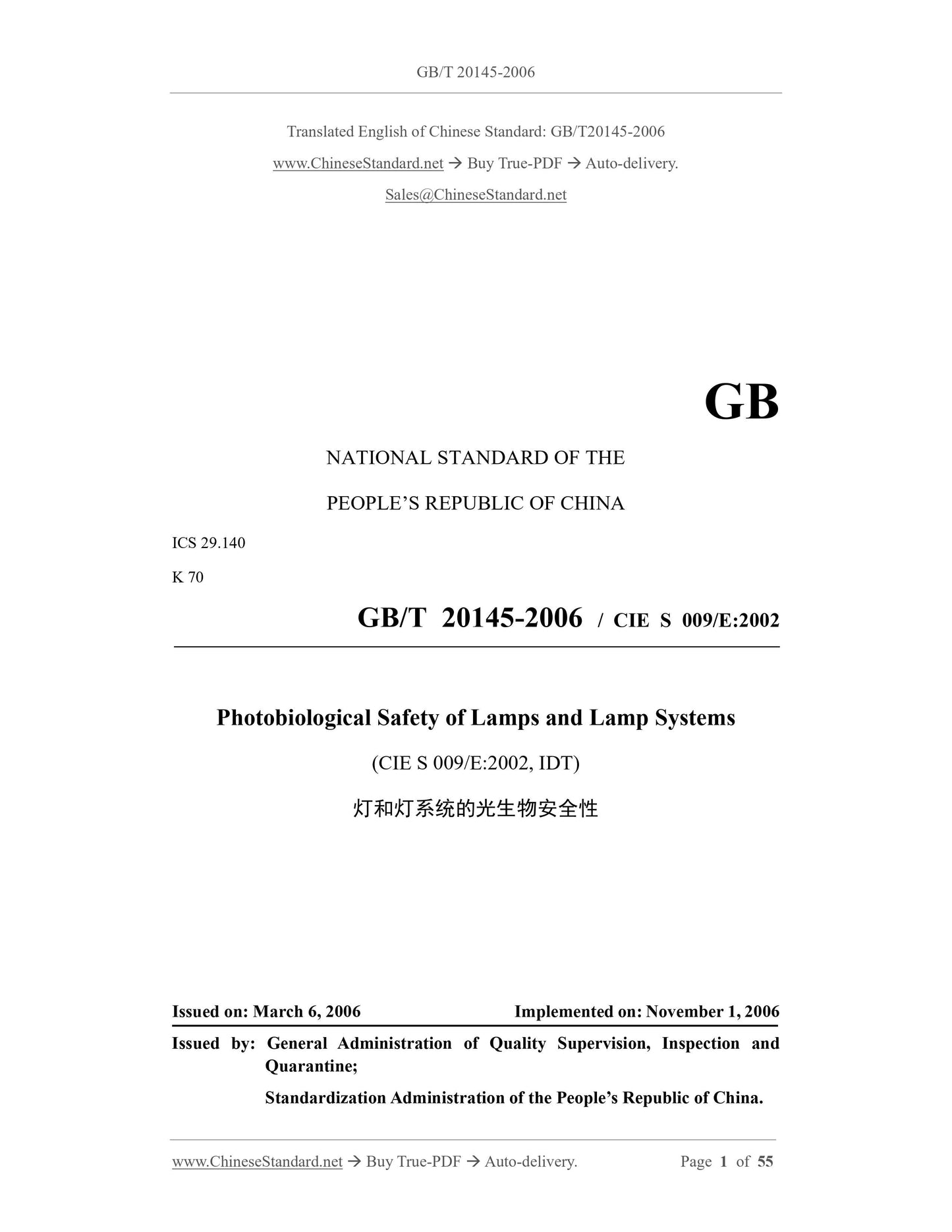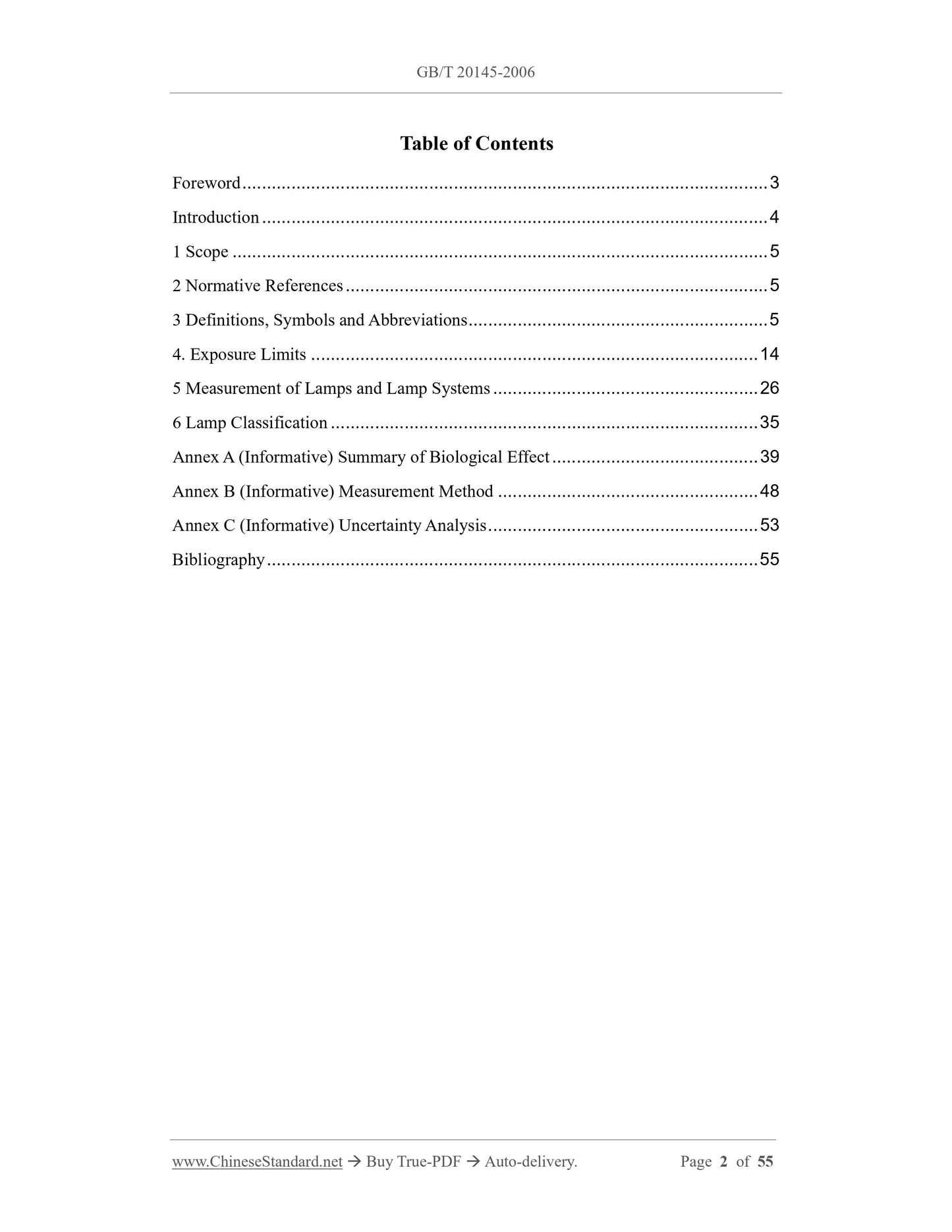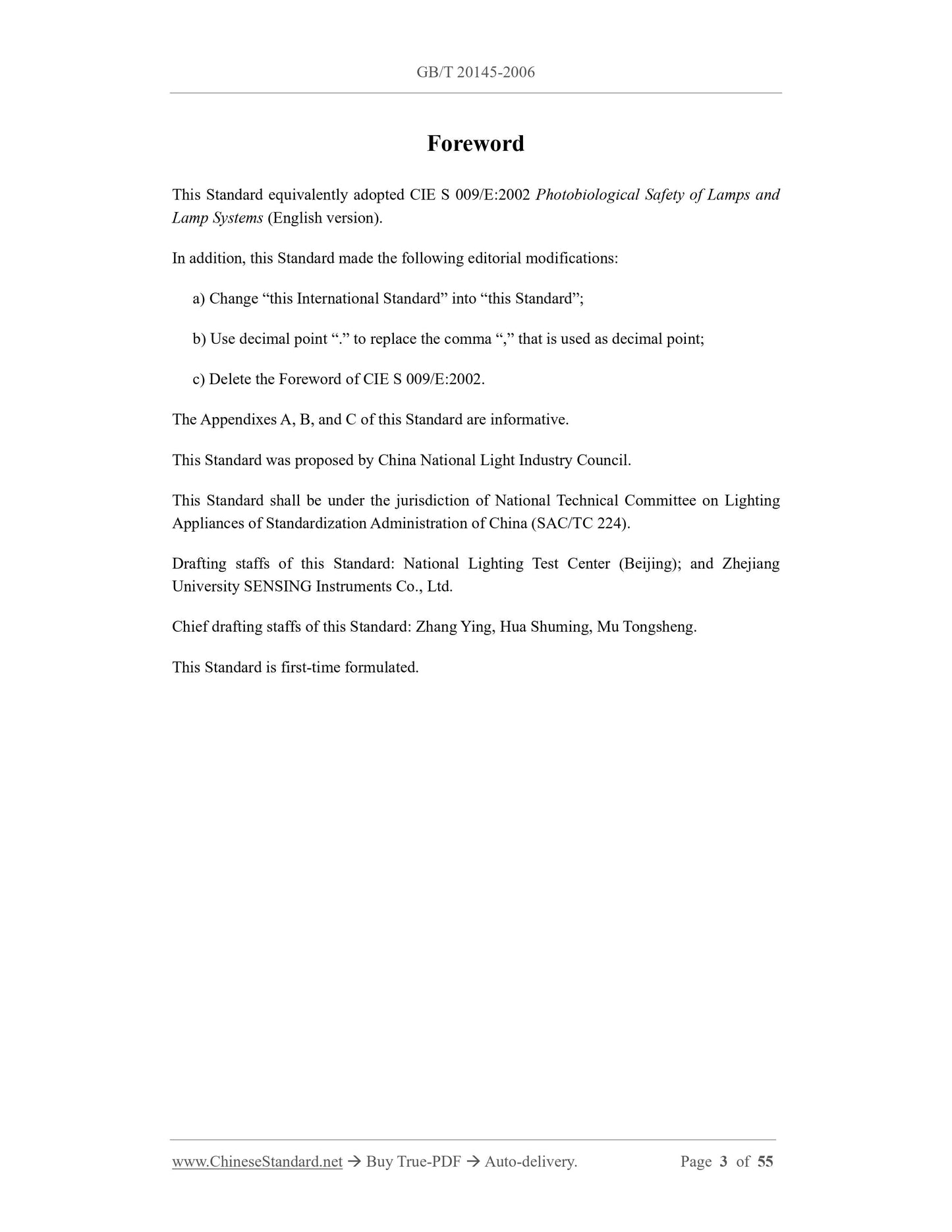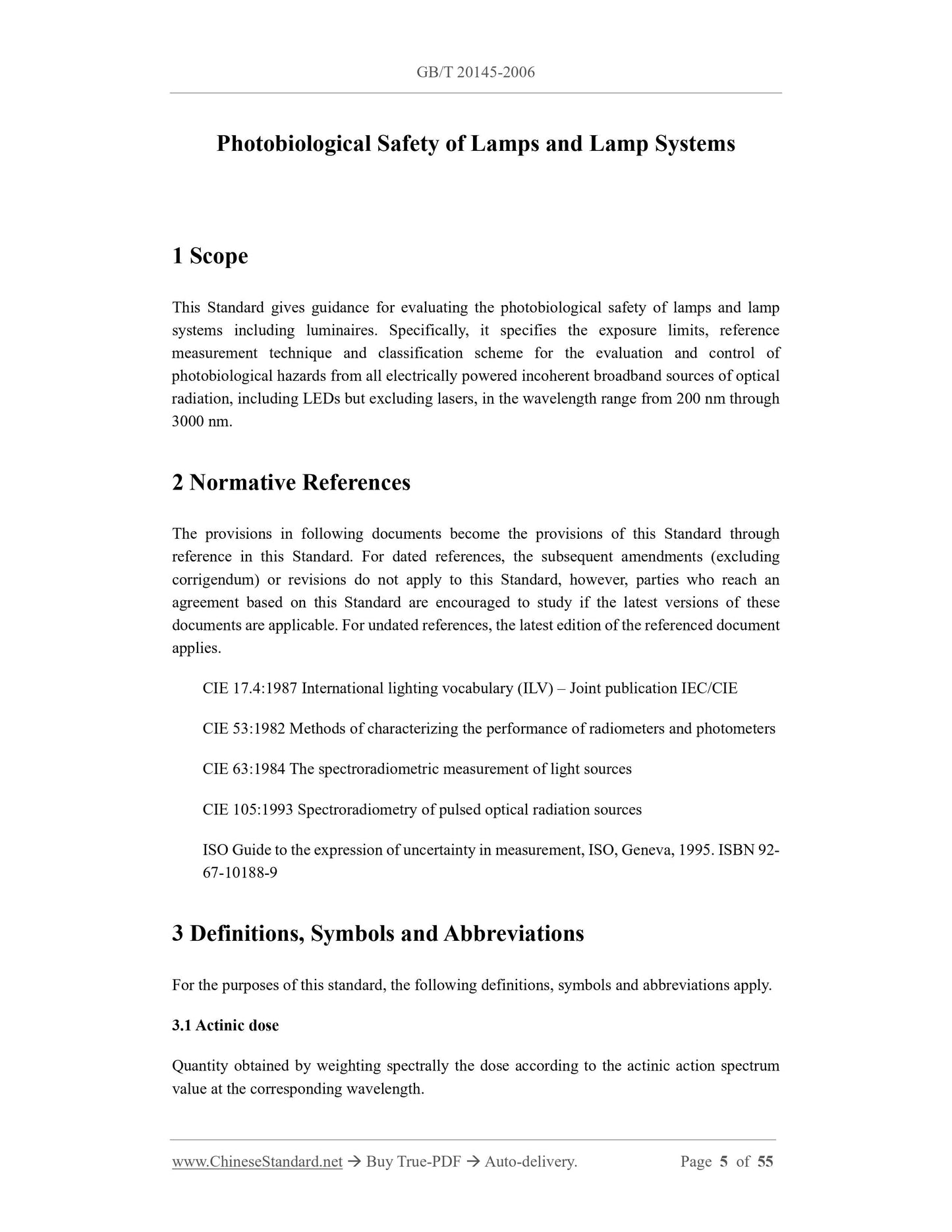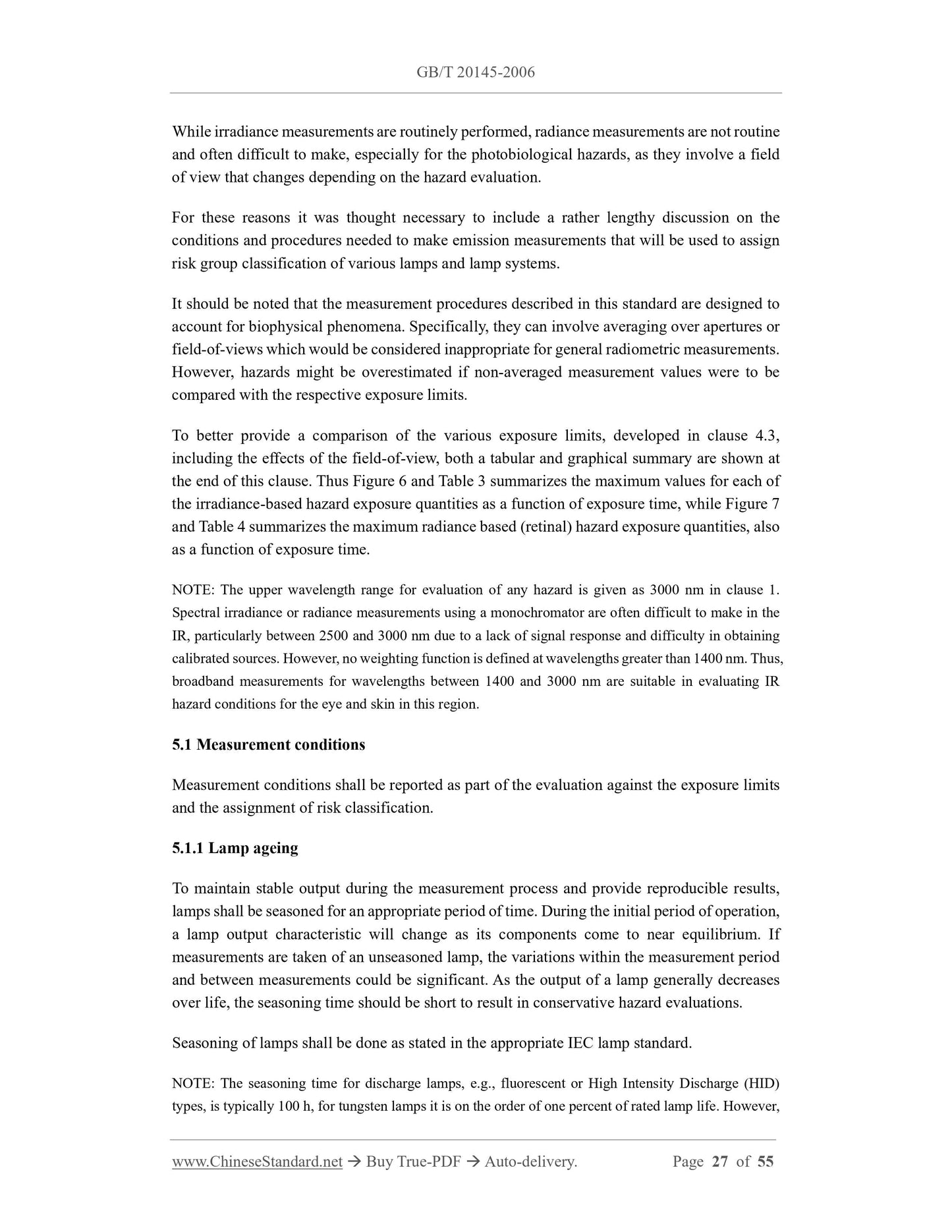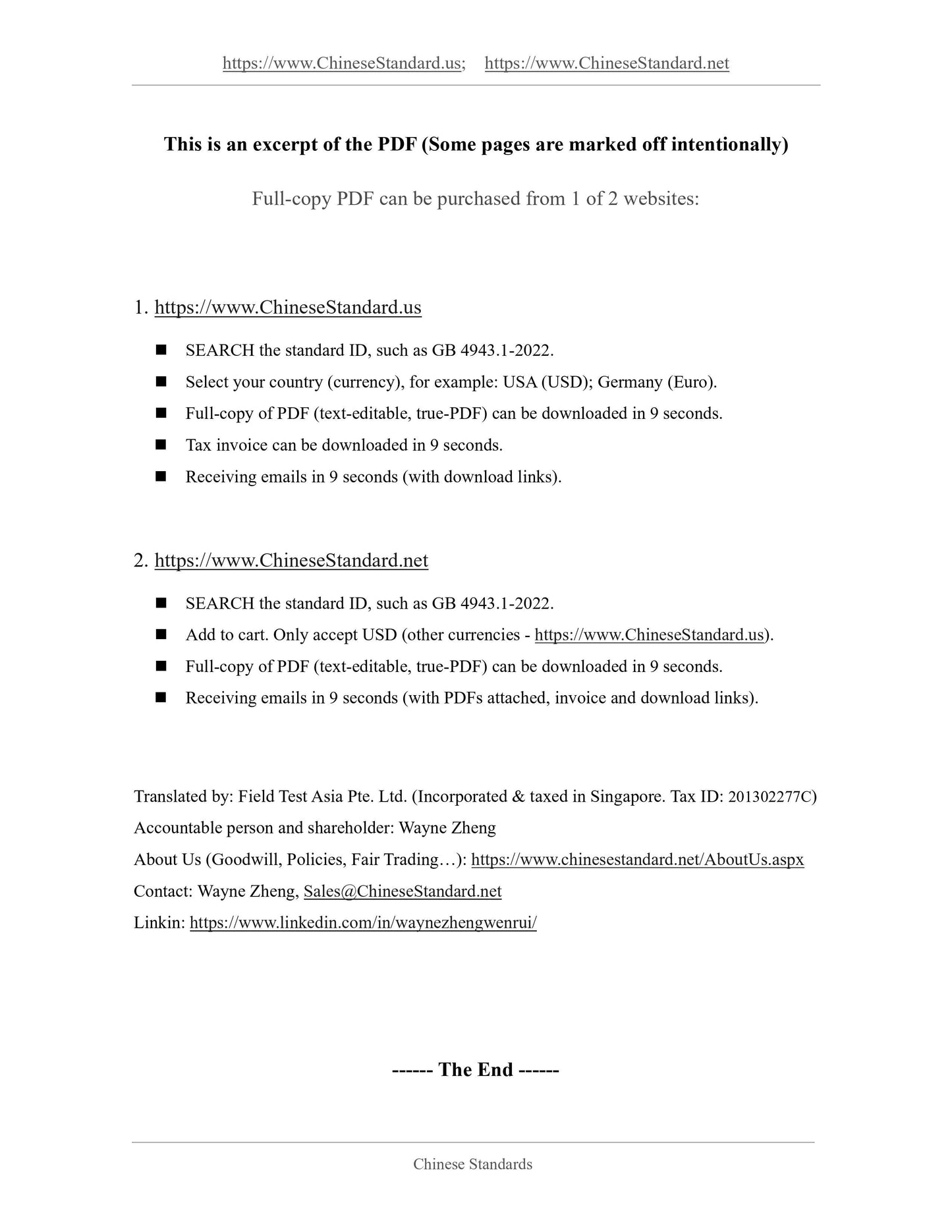1
/
of
6
www.ChineseStandard.us -- Field Test Asia Pte. Ltd.
GB/T 20145-2006 English PDF (GB/T20145-2006)
GB/T 20145-2006 English PDF (GB/T20145-2006)
Regular price
$750.00
Regular price
Sale price
$750.00
Unit price
/
per
Shipping calculated at checkout.
Couldn't load pickup availability
GB/T 20145-2006: Photobiological safety of lamps and lamp systems
Delivery: 9 seconds. Download (and Email) true-PDF + Invoice.Get Quotation: Click GB/T 20145-2006 (Self-service in 1-minute)
Newer / historical versions: GB/T 20145-2006
Preview True-PDF
Scope
This Standard gives guidance for evaluating the photobiological safety of lamps and lampsystems including luminaires. Specifically, it specifies the exposure limits, reference
measurement technique and classification scheme for the evaluation and control of
photobiological hazards from all electrically powered incoherent broadband sources of optical
radiation, including LEDs but excluding lasers, in the wavelength range from 200 nm through
3000 nm.
Basic Data
| Standard ID | GB/T 20145-2006 (GB/T20145-2006) |
| Description (Translated English) | Photobiological safety of lamps and lamp systems |
| Sector / Industry | National Standard (Recommended) |
| Classification of Chinese Standard | K70 |
| Classification of International Standard | 29.140 |
| Word Count Estimation | 38,323 |
| Date of Issue | 2006-03-06 |
| Date of Implementation | 2006-11-01 |
| Quoted Standard | CIE 17.4-1987; CIE 53-1982; CIE 63-1984; CIE 105-1993; ISO Guide to the Expression of Uncertainty in Measurement |
| Adopted Standard | CIE S 009/E-2002, IDT |
| Regulation (derived from) | China Announcement of Newly Approved National Standards No. 4, 2006 (No. 91 overall) |
| Issuing agency(ies) | General Administration of Quality Supervision, Inspection and Quarantine of the People's Republic of China, Standardization Administration of the People's Republic of China |
| Summary | This standard applies to the assessment of lamps and lamp systems, including a variety of light fixtures biosafety guidance. |
Share
